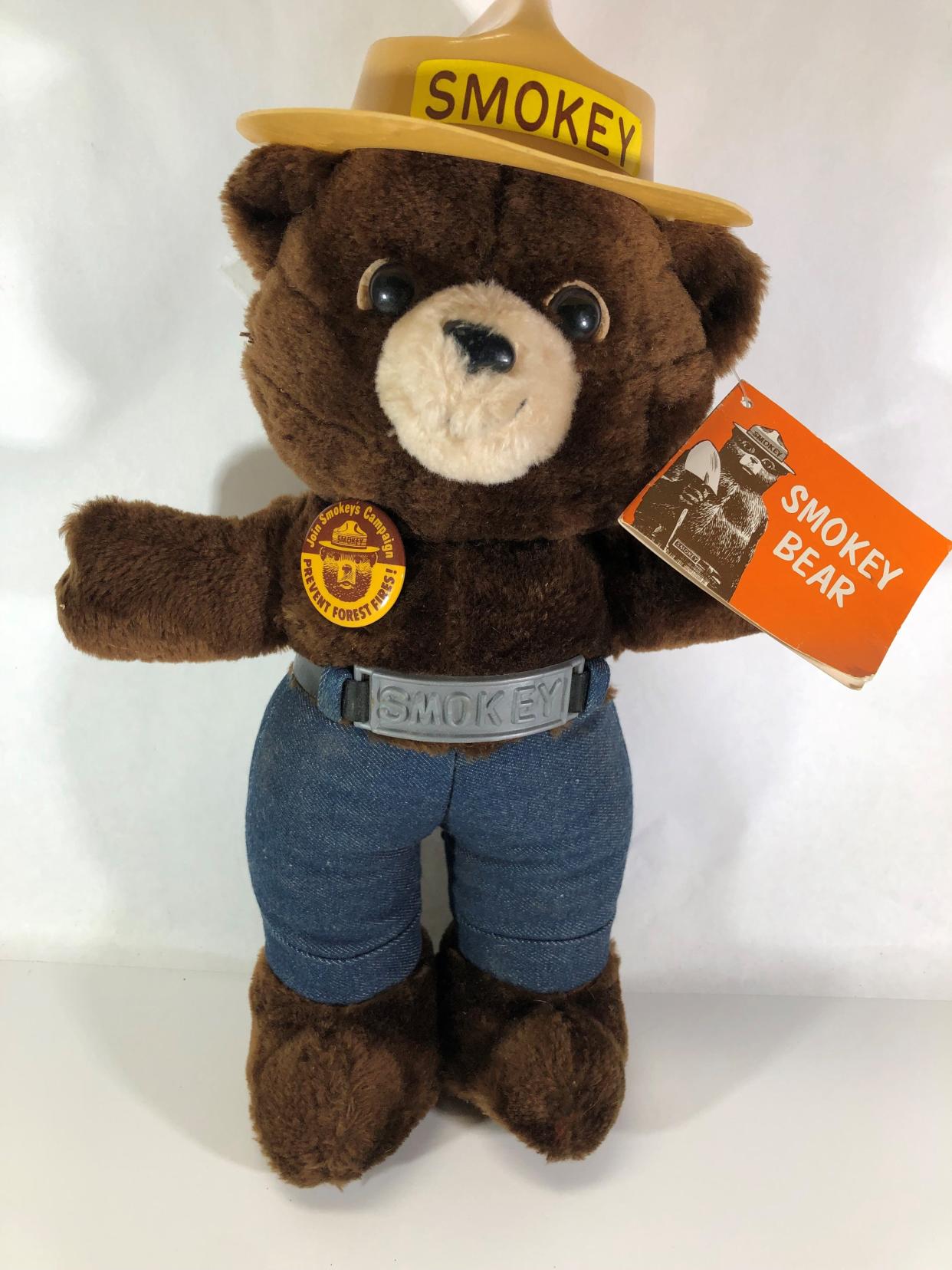Antiques: We're bullish on Smokey the Bear

Unless you live in a cave, you've probably taken note of the many animals these days that are trying to sell you something on TV. There's Tony the Tiger peddling breakfast cereal, a talking duck that flogs insurance and some gorgeous polar bears that swig soft drinks without any evident consequences.
Sometimes the message is more easily delivered by a make-believe animal than by a real person. For we elders, there weren't quite so many animated spokes-critters back in the day, but one that most of us will remember is Smokey the Bear. Smokey was a regular presence both in print and on television, and his visage has become a collectible category all its own. In fact, he's still out there, and with the advent of warmer weather it might be time for a visit.
It might come as a surprise to you as it did to me, but Smokey was, in fact, a real bear. The animated version was introduced during World War II by the U.S. Forest Service after an unusually active fire season. "Only you can prevent forest fires" was about all he ever said, but a real Smokey came into being in early 1950 when a black bear cub was found after a fire in New Mexico's Lincoln National Forest with burns over much of its body. Despite being in critical condition, the little fellow was nursed back to health and later that year was transferred to the Smithsonian Institute with the proviso that he become the symbol of fire prevention. Smokey (no middle name) Bear was thus born.
Following his arrival in Washington, D.C., Smokey was transferred to the National Zoo whereupon an Act of Congress formalized the character and established penalties for the misuse of his image. His public debut was courtesy of Hopalong Cassidy, who made a record about Smokey and cut a number of public service radio spots featuring his fire prevention message. Throughout the 1950s, Smokey was featured in a variety of Forest Service ad campaigns and even had his own stationery and paw print signature.
The real Smokey lived out his life at the zoo and became one its most popular attractions. He drew many letters from admirers, including those wondering what kind of honey he liked and why he didn't wear his dungarees and hat while on display. Eventually, a little Smokey came into being in the form of an orphan cub found in New Mexico and introduced to the public in 1971. A few years later, a letter released by Zoo director T.H. Reed gave details of Smokey's diet, including fresh fish, fruits, vegetables and bread that indicated a daily expenditure of some $4.46. It was noted that Smokey's favorite fish was butterfish.
After a long and healthy life, the original Smokey finally died in 1976 at age 26.
As for Smokey merchandise, it comes in all shapes and sizes. The United States Forest Service remains the primary licensee, but original Smokey dolls — the likes of which were promoted by President Dwight Eisenhower in the 1950s — can bring several hundred dollars. Condition is key, as are the presence of Smokey's hat, clothing and pin. They occasionally turn up in flea markets and galleries like ours, and there are avid collections of all the variations. In the world of animal hucksters, few have lived such a long and fruitful life.
Mike Rivkin and his wife, Linda, are long-time residents of Rancho Mirage. For many years, he was an award-winning catalogue publisher and has authored seven books, along with countless articles. Now, he's the owner of Antique Galleries of Palm Springs. His antiques column appears Sundays in The Desert Sun. Want to send Mike a question about antiques? Drop him a line at info@silverfishpress.com.
This article originally appeared on Palm Springs Desert Sun: Antiques: We're bullish on Smokey the Bear

